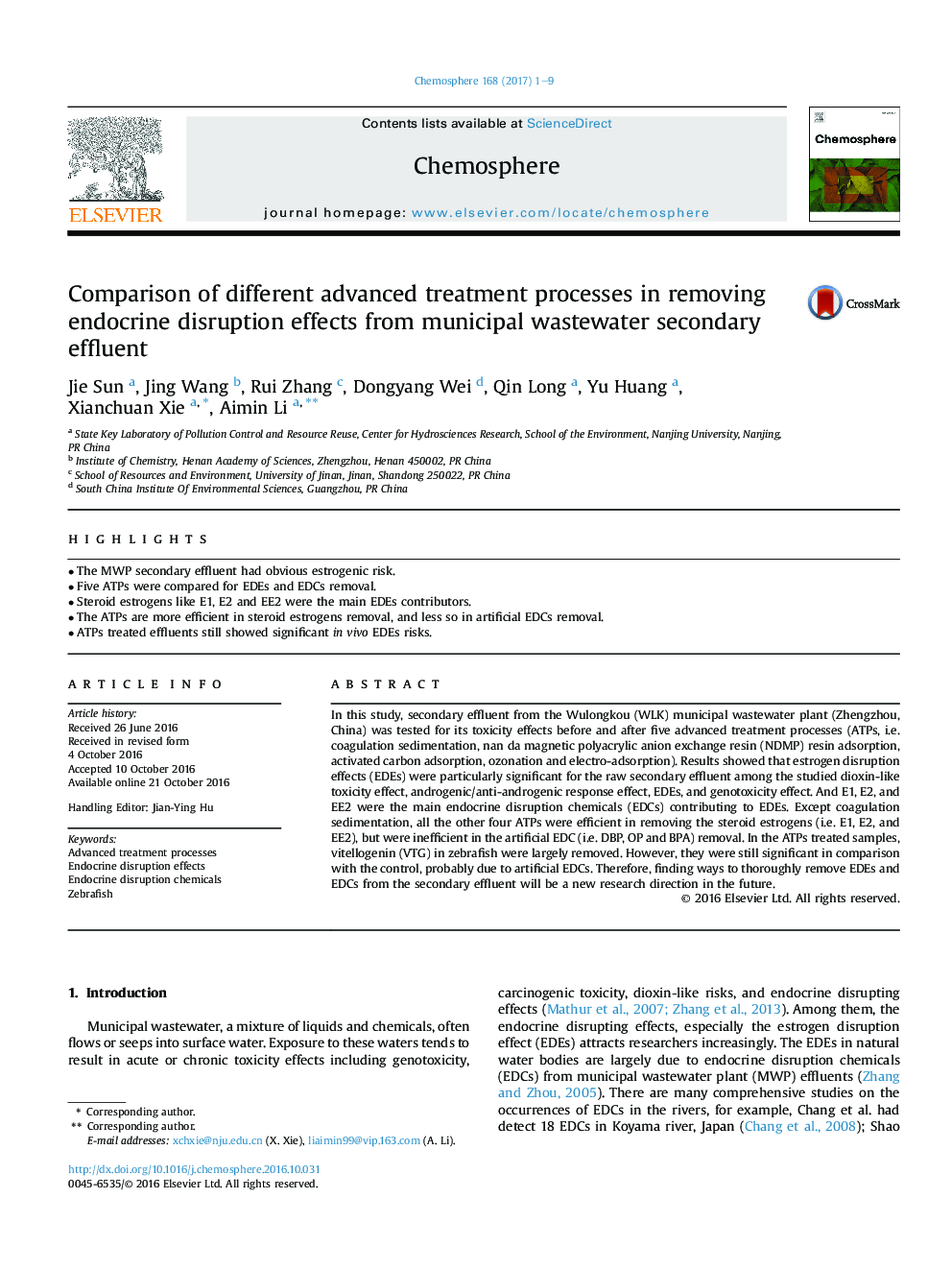| کد مقاله | کد نشریه | سال انتشار | مقاله انگلیسی | نسخه تمام متن |
|---|---|---|---|---|
| 5746650 | 1618803 | 2017 | 9 صفحه PDF | دانلود رایگان |
- The MWP secondary effluent had obvious estrogenic risk.
- Five ATPs were compared for EDEs and EDCs removal.
- Steroid estrogens like E1, E2 and EE2 were the main EDEs contributors.
- The ATPs are more efficient in steroid estrogens removal, and less so in artificial EDCs removal.
- ATPs treated effluents still showed significant in vivo EDEs risks.
In this study, secondary effluent from the Wulongkou (WLK) municipal wastewater plant (Zhengzhou, China) was tested for its toxicity effects before and after five advanced treatment processes (ATPs, i.e. coagulation sedimentation, nan da magnetic polyacrylic anion exchange resin (NDMP) resin adsorption, activated carbon adsorption, ozonation and electro-adsorption). Results showed that estrogen disruption effects (EDEs) were particularly significant for the raw secondary effluent among the studied dioxin-like toxicity effect, androgenic/anti-androgenic response effect, EDEs, and genotoxicity effect. And E1, E2, and EE2 were the main endocrine disruption chemicals (EDCs) contributing to EDEs. Except coagulation sedimentation, all the other four ATPs were efficient in removing the steroid estrogens (i.e. E1, E2, and EE2), but were inefficient in the artificial EDC (i.e. DBP, OP and BPA) removal. In the ATPs treated samples, vitellogenin (VTG) in zebrafish were largely removed. However, they were still significant in comparison with the control, probably due to artificial EDCs. Therefore, finding ways to thoroughly remove EDEs and EDCs from the secondary effluent will be a new research direction in the future.
Journal: Chemosphere - Volume 168, February 2017, Pages 1-9
